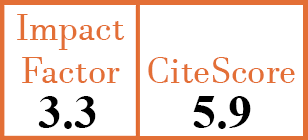Full Papers
Predictors of end-stage renal disease and recurrence of lupus activity after initiation of dialysis in patients with lupus nephritis
S.-J. Moon, H.S. Park, S.-K. Kwok, J.H. Ju, H.-Y. Kim, S.-H. Park
CER5151
2013 Vol.31, N°1
PI 0031, PF 0039
Full Papers
Free to view
(click on article PDF icon to read the article)
PMID: 22935632 [PubMed]
Received: 05/10/2011
Accepted : 16/03/2012
In Press: 30/08/2012
Published: 28/01/2013
Abstract
OBJECTIVES:
The present paper aims at identifying the predictors of end-stage renal disease (ESRD) and at determining the long-term outcome of ESRD patients according to renal replacement modality in Korean patients with lupus nephritis (LN).
METHODS:
Between 1985 and 2010, 321 Korean patients with LN were enrolled in this study. We analysed the clinical and laboratory indices, the treatment responses and the biopsy findings. The events of interest were estimated by the Kaplan-Meier method and the risk factors were assessed by univariate and multivariate Cox proportional hazards regression analyses.
RESULTS:
The median follow-up time after the diagnosis of LN was 84 months. During follow-up, twenty-nine patients evolved to ESRD. Renal survival rate at 5 and 10 years after LN onset was 95.9% and 91.1%, respectively. Deteriorated renal function (estimated glomerular filtration rate <60 ml/min/1.73m2) at LN onset (hazard ratio: 9.223) was found to be an independent risk factor for the development of ESRD. Recurrence of lupus nephritis in renal allograft and flare-ups of lupus activity were not observed among the patients undergoing kidney transplantation (KT) (n=11). In contrast, those with maintenance dialysis (n=18) developed 13 episodes of lupus flare in 10 patients and 5 died of either infection (n=2) or lupus flare (n=3).
CONCLUSIONS:
The impaired renal function at baseline is an independent predictor of ESRD in Korean patients with LN. The benefits of KT on the control of lupus activity and survival should be emphasised.


